Who says you can’t race in winter?
Posted on Jul 24, 2021 in Featured | 2 comments
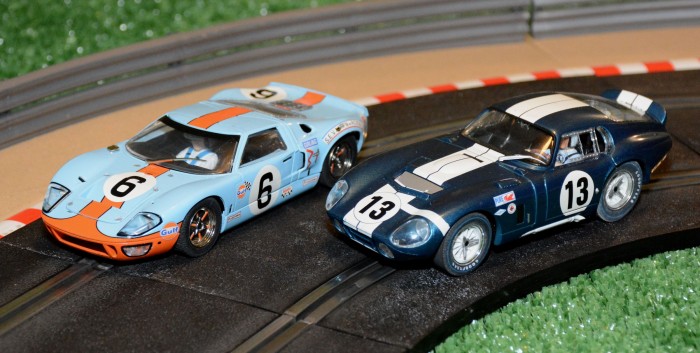
A Ford GT40 Mk I battles a Cobra Daytona Coupe.
In the interest of full disclosure, I’ve been holding out on you. I’ve never discussed my collection of historically significant racing cars, nor have I revealed that I have access to my own year-round testing, development and racing facility.
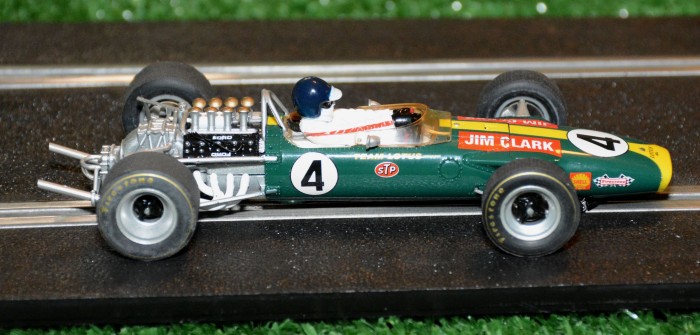
Jim Clark’s 1968 Lotus Type 49.
The cars under my stewardship include a Lotus Type 49, as driven by Jim Clark in South Africa in 1968; the John Wyer Ford GT40 Mk I that won Le Mans in 1969; a short-tail Porsche 917, as driven by Helmut Marko and Gijs van Lennep in 1971; a Cobra Daytona Coupe, which finished second overall at the 24 Hours of Daytona in 1965; the Porsche 956 driven by Mario Andretti, Michael Andretti and Philippe Alliot to a third-place finish at Le Mans in 1983; and even a Bud Moore Trans Am Mustang, as raced by George Follmer. All are in good condition, though many carry the scars of on-track battles well fought, and all are exercised on a regular basis.
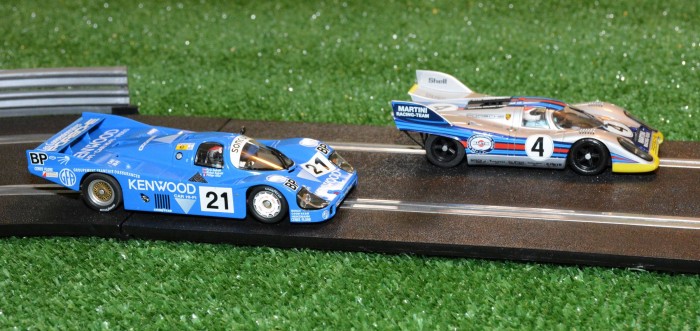
As for the track, it’s a challenging mix of S-curves, interspersed by short straights and a pair of long straights, perfect for testing both acceleration and braking. Like the Nürburgring, run-off area isn’t exactly ample, forcing a driver to be atop his game when probing the limits of a car, as a careless application of throttle or a bit of too-late braking can have dire results. Unlike the ‘Ring, it’s even climate-controlled (when I remember to plug in the heater or fire up the wood stove), and it’s just steps away from the beer fridge.

The current layout. Note the (necessary) catch fencing surrounding the rear straight.
I am, of course, talking about a 1/32 slot car layout, one that’s followed me on two cross-country moves and several local ones over the past nine years. Consisting largely of Scalextric Sport track, with Parma variable-resistance controllers (wired for braking, of course), the track has been through a variety of configurations over the years, and (this time) is built upon two four-foot by eight-foot sheets of plywood, wrapped in Astroturf and clamped together to form its current shape. Given my past history of relocation, portability was an important consideration in its design.
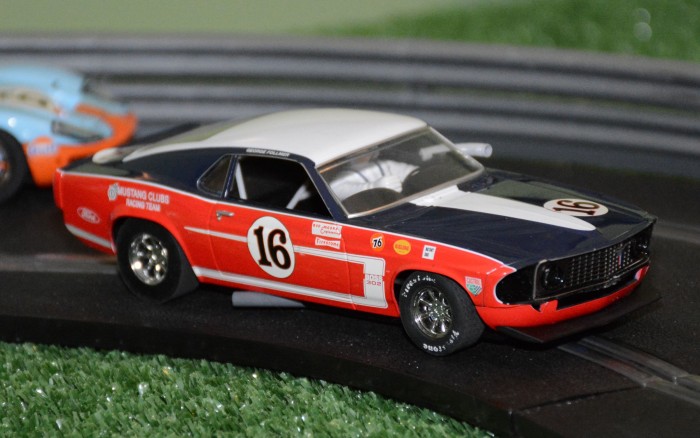
Bud Moore Trans-Am Mustang.
At the dawn of the 21st century, slot car racing in 1/32 scale was enjoying a resurgence of popularity in the United States. Virtually every electronics retailer was shilling high-quality track sets from makers like Scalextric and Carrera, and as someone who virtually wore out HO-scale sets in his youth, the appeal was undeniable to me.
After receiving a set as a Christmas gift, I set to work converting the unused portion of our New Jersey basement into a massive slot car layout, and for the next seven years, racing on weekend nights was a common occurrence. Though the scale may have been small, the battles fought were not.
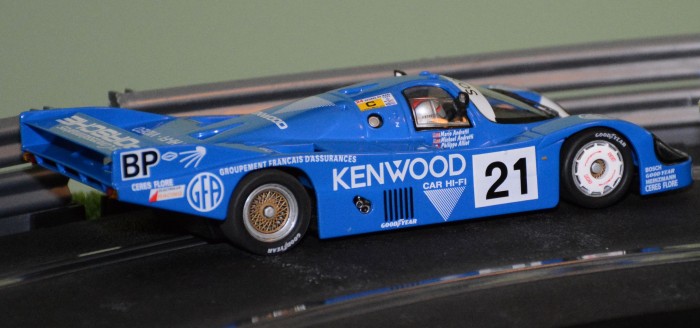
The Porsche 956 that finished third at Le Mans in 1983.
We ran cars from a variety of manufacturers (and real-life series), each with a distinctly different feel and level of performance. Some, like the Porsche 956, coupled limited magnetic “downforce” with a long wheelbase and a high-torque motor, requiring a delicate touch on the controller.
Others, like the Ford GT 40 Mk II, had both ample grip and more-than-sufficient power, making wheel-to-wheel-racing a dizzying affair. Some featured a front-engine, rear-drive layout, while others used a mid-mounted engine to drive the rear wheels. As with real cars, crashing came with consequences, often prompting super glue repairs between heats.
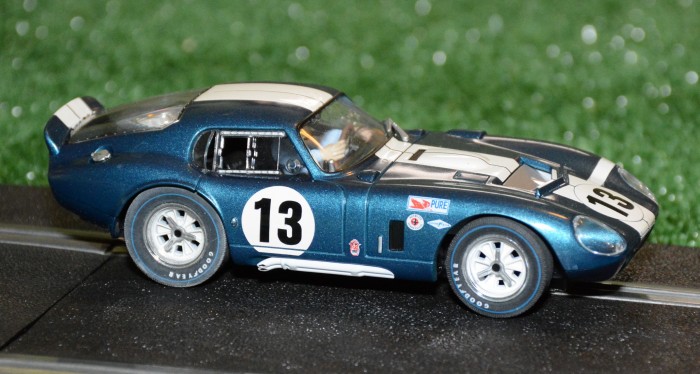
Shelby Daytona Cobra Coupe, CSX2299.
A change in careers prompted the sale of our New Jersey house, and, in 2007, the layout was boxed up and moved, first to a condo in Florida, then to a basement-less house in Florida, then to a rental house in Bennington, and finally to our semi-permanent current location. Which, conveniently, has a completed rec room in the basement, one big enough to accommodate a relatively sizable slot car layout.

Ford GT40 Mk I, in John Wyer Gulf livery.
And that, I suppose, brings me full circle, except that slot cars and parts aren’t the big sellers they were a decade or so back. Local hobby stores are few and far between, and even the online specialist retailers don’t stock the inventory they used to. Replacement silicone tires, for example, can be a bit tricky to find, and when cars have been locked down in plastic cases for nine years, flat-spotted tires are the inevitable result. Spare parts aside, most ills can be remedied with a bit of oil, a Dremel tool and some superglue, which makes this one of the last budget-friendly forms of racing on the planet.





.gif)


Did I hear the mention of several hot motors? I may have to update a few of mine before I come for my next visit. Mine are all oiled and ready to go. I even got new tires for my flat spots. Good thing for putting up the catch fence to help you keep your cars off the floor.
I meant the non-stock motors that both of us seem to have snuck underneath a few bodies…